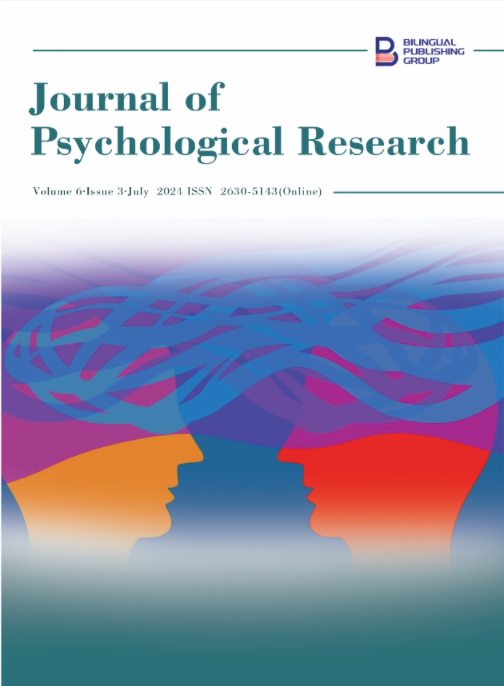-
577
-
554
-
334
-
333
-
324
Sex Differences in Stigma Reduction toward Minor Attracted Persons (MAPs) via Contact Interventions
DOI:
https://doi.org/10.30564/jpr.v6i3.6364Abstract
Individuals who are sexually attracted to children (i.e., people with pedophilic interests or minor-attracted persons; MAPs) can, and do, live offence-free. Stigmatization and fear of conviction, however, can prevent MAPs from accessing appropriate support and treatment. Previous researchers compared the impact of two interventions – narrative humanization vs. scientific information-in reducing stigma towards people with pedophilic interests and found the former to be more effective. Using freely available secondary data, the present study replicated and extend this previous research by directly examining sex differences on impact of the two interventions. As predicted, females (vs. males) held more negative and stigmatic attitudes towards sex offenders at baseline and, while both interventions showed a positive impact on these negative attitudes, the impact was greater for females. Results are discussed in terms of reducing stigma regarding MAPs by positioning the issue in the public health domain by educating mental health professionals via contact interventions as a means of better protecting children and preventing child sexual abuse.
Keywords:
Pedophilia; Stigma; Attitudes; Narrative humanization; Sexual abuse preventionReferences
[1] Stewart, H., 2022. RESEARCH BRIEF - characteristics of minor attracted persons in the community: Developing a biopsychosocial-sexual typology of men with sexual interest in children. Criminal Justice Psychology. 29(1).
[2] American Psychiatric Association, 2013. Diagnostic and statistical manual of mental disorders (5th ed., text rev.). American Psychiatric Publishing. DOI: https://doi.org/10.1176/appi.books.9780890 425596
[3] Jahnke, S., Blagden, N., Hill, R., 2022. Pedophile, child lover, or minor-attracted person? Attitudes toward labels among people who are sexually attracted to children. Archives of Sexual Behavior. 51(8), 4125–4139. DOI: https://doi.org/10.1007/s10508-022- 02331-6
[4] Schmidt, A.F., Mokros, A., Banse, R., 2013. Is pedophilic sexual preference continuous? A texometric analysis based on direct and indirect measures. Psychological Assessment, 25, 1146–1153. DOI: https://doi.org/10.1037/a0033326
[5] Seto, M. C., 2018. Pedophilia and sexual offending against children: theory, assessment, and intervention (Second ed.) American Psychological Association. DOI: https://www.apa.org/pubs/books/4317491
[6] Jahnke, S., 2018. Emotions and cognitions associated with the stigma of non-offending pedophilia: A vignette experiment. Archives of Sexual Behavior. 47(2), 363–373. https://doi. org/10.1007/s10508-017-1073-7
[7] Willis, G., Malinen, S., Johnston, L., 2013. Demographic differences in public attitudes towards sex offenders. Psychiatry, Psychology and Law. 20, 1–18. DOI: https://doi.org/10.1080/13218719.2012.6 58206
[8] Basile, K.C., Smith, S.G., Kresnow, M., et al., 2022. The National Intimate Partner and Sexual Violence Survey: 2016/2017 Report on Sexual Violence. Atlanta, GA: National Center for Injury Prevention and Control, Centers for Disease Control and Prevention.
[9] Harper, C.A., Lievesley, R., Blagden, N.J., et al., 2022. Humanizing pedophilia as stigma reduction: A large-scale intervention study. Archives of Sexual Behavior. 51(2), 945–960. DOI: https://doi.org/10.1007/s10508-021- 02057-x
[10] Chen, J., Courtwright, A., 2016. Stigmatization. In Encyclopedia of Global Bioethics. Springer: Cham. 2706–2712. DOI: https://doi.org/10.1007/978-3-319-09483-0_404
[11] Cohen, L.J., Wilman-Depena, S., Barzilay, S., et al., 2019. Correlates of chronic suicidal ideation among community-based minor-attracted persons. Sexual Abuse. 32(3), 374–392. DOI: https://doi.org/10.1177/1079063219825868
[12] Lievesley, R., Harper, C.A., Elliott, H., 2020. The internalization of social stigma among minor-attracted persons: Implications for treatment. Archives of Sexual Behavior. 49(4), 1291–1304. DOI: https://doi.org/10.1007/s10508-019- 01569-x
[13] Jahnke, S., Imhoff, R., Hoyer, J., 2014. Stigmatization of people with pedophilia: Two comparative surveys. Archives of Sexual Behavior. 44, 21–34. DOI: http://dx.doi.org/10.1007/s10508-014- 0312-4
[14] Stiels-Glenn, M., 2010. The availability of outpatient psychotherapy for paedophiles in Germany. Recht and Psychiatrie. 28(2), 74–80.
[15] Alanko, K., Haikio, J., Laiho, M., et al., 2014. Attitudes and knowledge to treat potential child sexual offenders among finnish health care professionals. Manuscript submitted for publication.
[16] Corrigan, P.W., Penn, D.L.,1999. Lessons from social psychology on discrediting psychiatric stigma. American Psychologist. 54(9), 765– 776. DOI: https://doi.org/10.1037/0003-066X.54.9.765
[17] Corrigan, P., Morris, S., Michaels, P., et al., 2012. Challenging the public stigma of mental illness: a meta-analysis of outcome studies. Psychiatric Services. 63(10), 963–973. DOI: https://doi.org/10.1176/appi.ps.201100529
[18] Jahnke, S., Philipp, K., Hoyer, J., 2015. Stigmatizing attitudes towards people with pedophilia and their malleability among psychotherapists in training. Child Abuse and Neglect. 40, 93–102. DOI: https://doi.org/10.1016/j.chiabu.2014.07.008
[19] Harper, C.A., Bartels, R., Hogue, T., 2018. Reducing stigma and punitive attitudes toward pedophiles through narrative humanization. Sexual Abuse: A Journal of Research and Treatment. 30(5), 533-555. DOI: https://doi.org/10.1177/1079063216681561
[20] TVO Today. (2014, January 21). Mysteries of the Mind: The Pedophile’s Brain (HD).
[21] Hogue, T., Harper, C., 2018. Development of a 21-item short form of the attitudes to sexual offenders (ATS) scale. Law and Human Behavior, 43(1), 117–130. DOI: https://doi.org/10.1037/lhb0000308
[22] Imhoff, R., 2015. Punitive attitudes against pedophiles or persons with sexual interest in children: Does the label matter? Archives of Sexual Behavior. 44(1), 35–44. DOI: https://doi.org/10.1007/s10508-014- 0439-3
[23] Hogue, T., 1993. Attitudes towards prisoners and sex offenders. Issues in Criminological & Legal Psychology. 19, 27–32.
[24] Harper, C.A., Hogue, T.E., Bartels, R.M., 2017. Attitudes towards sexual offenders: What do we know, and why are they important? Aggression and Violent Behavior. 34, 201–213. DOI: https://doi.org/10.1016/j.avb.2017.01.011
[25] McCartan, K.F., Kemshall, H., Tabachnick, J., 2015. The construction of community understandings of sexual violence: rethinking public, practitioner, and police discourses. Journal of Sexual Aggression. 21(1), 100–116. DOI: https://doi.org/10.1080/13552600.2014.9 45976
[26] Sanghara, K.K., Wilson, J., 2006. Stereotypes and attitudes about child sexual abusers: A comparison of experienced and inexperienced professionals in sex offender treatment. Legal and Criminological Psychology. 11(2), 229–244. DOI: https://doi.org/10.1348/135532505X68818
[27] Lea, S., Auburn T., Kibblewhite, K., 1999. Working with sex offenders: The perceptions and experiences of professionals and paraprofessionals. International Journal of Offender Therapy and Comparative Criminology. 43(1), 103–119. DOI: https://doi.org/10.1177/0306624X99431010
[28] Hogue, T.E., Peebles, J., 1997. The influence of remorse, intent and attitudes toward sex offenders on judgments of a rapist. Psychology, Crime and Law. 3(4), 249–259. DOI: https://doi.org/10.1080/10683169708410821
Downloads
How to Cite
Issue
Article Type
License
Copyright © 2024 Jessica P. Gaudette, Margo C. Watt, Christopher J. Lively

This is an open access article under the Creative Commons Attribution-NonCommercial 4.0 International (CC BY-NC 4.0) License.




 Jessica P. Gaudette
Jessica P. Gaudette






